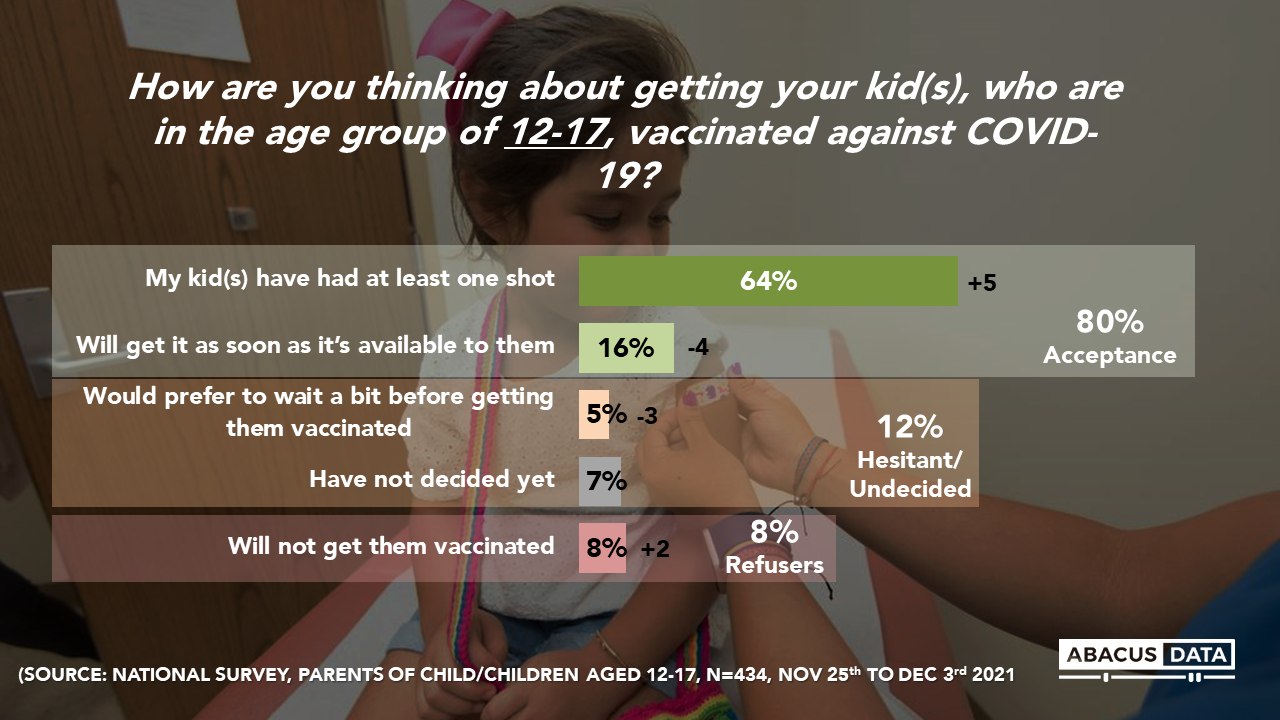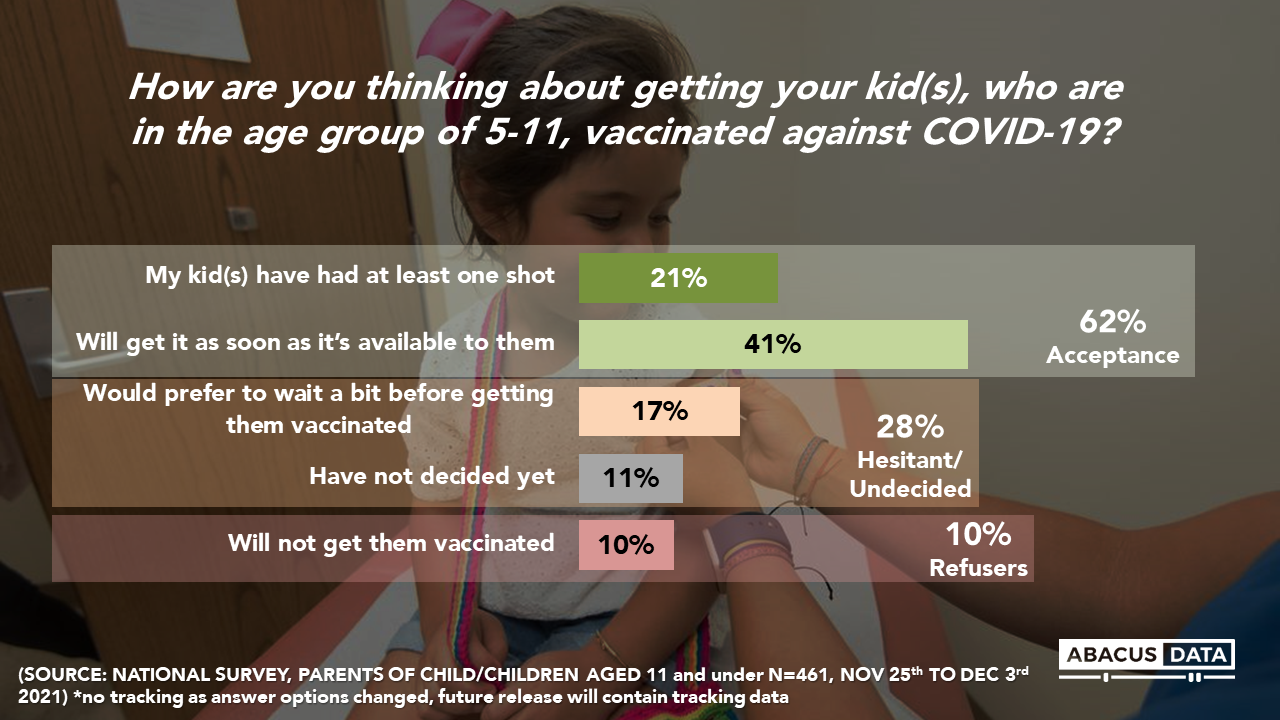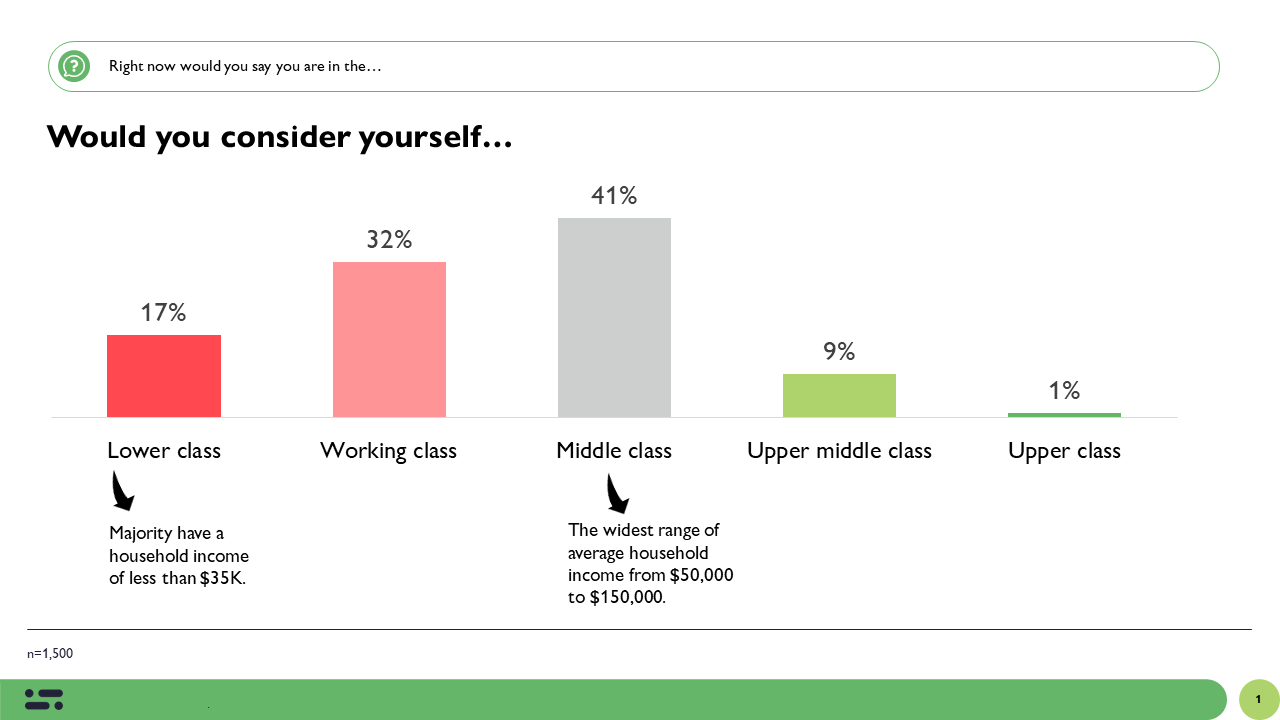Line-ups or Aversion? Vaccine Hesitancy Among Parents
December 7, 2021
Just two weeks ago, vaccine bookings for children aged 5 to 11 opened in Ontario and other regions across the country. We’ve seen many families express relief and excitement towards this news, as their younger family members become eligible to receive the jab. So far, we’ve seen that vaccines are a crucial part to getting out of this pandemic, so a continuous rise in vaccine acceptance among parents is important.
Now that the vaccine is available for these children, what does vaccine hesitancy look like amongst their parents? Has acceptance risen since we last measured it back in October? And what are parents planning to do now that their children are eligible for the shot?
In short, we still have some work ahead.
As a quick note, the earlier data is from early October, before the approval or availability of vaccines for those five to 11 years of age.
First, for parents of 12- to 17-year-olds, vaccine acceptance remains at a stable 80%. This includes those who say their kids in this age group have had at least one shot, or will get it as soon as it’s available to them. The proportion of those who’ve had one shot has risen, but given the small sample sizes this is still within the margin of error.

Vaccine uptake among parents is a key driver for vaccine uptake in children. Among those who are in the ‘acceptance’ category, 95% are fully or partially vaccinated. Among those who are ‘refusers’, only 40% are fully or partially vaccinated.
But vaccine uptake among parents isn’t the only indicator or step needed to encourage parents to vaccinate their children. 65% of those considered ‘hesitant/undecided’ on vaccinating their children have one or more COVID shots themselves. This shows that the decision to vaccinate your children isn’t always viewed the same as a decision to vaccinate yourself- something public health needs to take into consideration.
Parents of children five to 11 are showing even more hesitancy. There has been some movement from October, with 62% saying their child has had at least one shot or will get one as soon as it’s available to them (back in October the number of those who said they’d take as soon as it’s available was just 51%). But acceptance is nearly 20-pts lower than parents of older children.

The vaccination status of parents also matters for children in this age group (94% of parents in the ‘acceptance group have had one or both shots), but it’s less important.
Among those in the ‘hesitant/undecided’ category, 83% have had one or more shots themselves. Whether it be because of lack of information, the recency of approval, or just a different decision-making process, hesitancy among parents of young children looks a lot different than hesitancy among parents of adults and even older children.
THE UPSHOT
So, in the first few weeks of vaccine eligibility for young children we are still seeing some levels of hesitancy. There’s been some improvement for parents of children aged 5-11, but there’s still a long way to go. While vaccinating parents is part of the solution, it isn’t the whole picture.
Applying lessons learned from vaccinating adults will be crucial- what works for one community, might not work for another, and that’s okay. Just as we did for adults, meeting parents where they are at on vaccines will be just as important as understanding context. Messaging that works for the eager parents might not work the same for those who are hesitant – the reasons for vaccinating their children might be different. And the level of information and assurance these parents need will be different too.
We will be sure to continue tracking these levels of acceptance in the coming months.
METHODOLOGY
This survey was conducted with 3,532 Canadian adults from November 25th to December 3rd 2021. The sample of parents of children 12-17 was n=434. The margin of error for a comparable probability-based random sample of the same size is +/- 4.7%, 19 times out of 20. The sample of parents of children under 12 was n=461. The margin of error for a comparable probability-based random sample of the same size is +/- 4.5%, 19 times out of 20.
The survey was conducted using a random sample of panelists invited to complete the survey from a set of partner panels based on the Lucid exchange platform. These partners are double opt-in survey panels, blended to manage out potential skews in the data from a single source.
The data was weighted according to census data to ensure that the sample matched Canada’s population according to age, gender, educational attainment, and region.
ABOUT ABACUS DATA
We are the only research and strategy firm that helps organizations respond to the disruptive risks and opportunities in a world where demographics and technology are changing more quickly than ever.
We are an innovative, fast-growing public opinion and marketing research consultancy. We use the latest technology, sound science, and deep experience to generate top-flight research-based advice to our clients. We offer global research capacity with a strong focus on customer service, attention to detail and exceptional value.
We were one of the most accurate pollsters conducting research during the 2021 Canadian election following up on our outstanding record in 2019.
Contact us with any questions.
Find out more about how we can help your organization by downloading our corporate profile and service offering.



